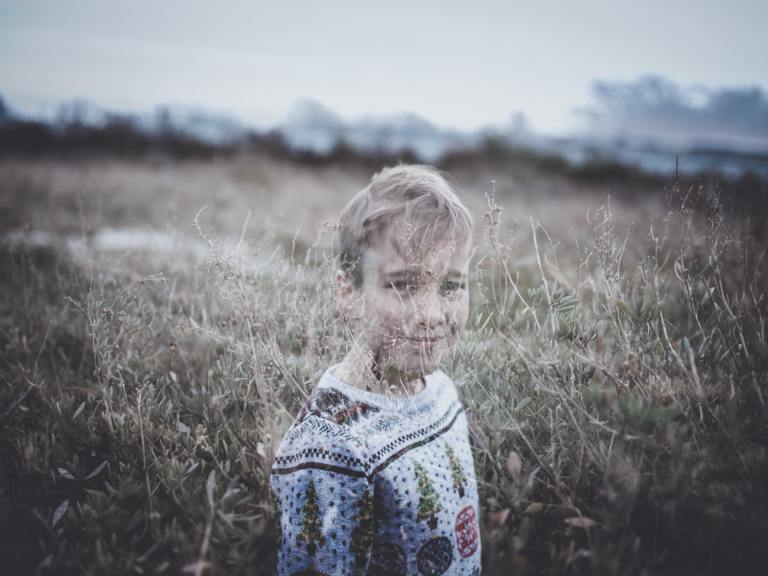Here’s Why I’m No Longer Using FaceTime During The Pandemic
It had been exactly 79 days since I had touched another human being.
That is until Dr J in the emergency room examined my left hand. The same hand a big, sharp knife had plunged into. I wish I could say you should see the other guy, but the other guy is actually a block of aged cheddar, unscathed.
So, before my left arm ended up in Dr J’s cold, clinical hands at George Washington University hospital, it had been 79 days.
Seventy-nine days earlier, in gentler times that feel like a lifetime ago, my best friend and I frolicked through the streets of Georgetown, arm in arm. After being separated by an ocean and a continent for two months, she wrapped me in a massive hug. She carried the weight of the world on her shoulders. So did I. But in that moment, it slipped away. We didn’t want to let go; letting go would mean we would have to return to the real world with all its brutality. But perhaps we would be better equipped to do so.
That was the last time I had tactile human contact, and it was crucial in helping me survive the things I was going through.
This I know to be true: Life will kick the shit out of you. And you’ll need someone to pick you up when that kitchen floor starts getting a little too comfortable. I especially discovered this over the last couple of years as I meandered through a long, stubborn illness. In my darkest hours, however, I found human touch to bring a little bit of light—friends who showed up with takeout, wiped the tears off my puffy face, and tucked me into bed.
So, yeah, things were bleak to begin with. Then the coronavirus happened.
There are those who are hunkered down with family, partners, roommates, cats, dogs, goldfish. And then there are those who are alone, unattached, far from home, maybe even deathly afraid of goldfish. For us, it’s been particularly difficult to weather the loneliness.
I grew up in a family that was not emotionally and physically affectionate. We never hugged. Or said, “I love you.” It was only when I went off to college 7,000 miles away and met friends generous with their affection that I understood what I had missed out on those first 18 years.
Over the past few months, I’ve glimpsed my chosen family through a screen. We’ve fantasized about haircuts, shared virtual hugs, and remarked at the unusually messy state of my room. During FaceTime with a college roommate, quarantined mere blocks away, we both reflexively stretched our hands to touch our screens as if it were a glass partition.
These video chats have been much needed, but they have not cured the loneliness. Virtual hugs are literally the worst. And FaceTime is not face-to-face time.
As I’ve looked at familiar faces made unfamiliar by laptop glow, I’ve had to fight the urge to glance at the notifications sliding into the top right corner. Try as I might, I can’t always ignore the emails and iMessages drifting in. Nor can I get over how distorted my face looks in my video reflection. I can’t possibly look this bad in person, right?
I’m a bad millennial. I prefer phone calls to texting. I’m averse to screens. I usually never take my phone out in the company of another person. I apologize when I do. There is this famous study which shows that the very presence of a phone during an interaction across a coffee table resulted in less connection and empathy.
I think about that study a lot.
When my cell phone heralds a video call, it becomes a device not simply just lying on the coffee table but the very thing I am gazing into as I try to connect with someone.
FaceTime reminds me of what is missing. FaceTime is exhausting. It takes constant eye contact, concentration, self-control I cannot always muster. And I’d much rather sit in someone’s presence, perhaps even in silence. In the ER, I FaceTimed with my best friend for six hours. They wouldn’t allow non-patients in to reduce risk of transmission, and she sat separated by a few walls in the waiting room or on the sidewalk when the room got crowded. She couldn’t hold my hand when I almost passed out from the lidocaine shot. Or help me with my jacket when the air conditioning became unbearable. Those six hours, with her face held in my non-injured hand, as dozens of healthcare workers and patients swarmed around me, were the loneliest of my life.
Even our best technological tools cannot come close to what it’s like to be in someone’s presence. Virtual communication does not allow for spontaneous touch or the perception of subtle cues. It does not allow you to share moments where nothing is said, where nothing needs to be said. We are wired to touch. It is central to our survival. It is food, water. It is air. On the rare occasions I venture outside, I invariably see people touching. A parent with a child. Friends flouting the rules of social distancing. Lovers holding hands. People pretending the pandemic is over. In these moments, the volcano of envy erupts and sweeps me away. This is a strange new feeling.
I had microscopic surgery in an attempt to repair the ruptured nerve in my hand. Touching objects is a challenge. This is also a strange new reality. I think about touch a lot.
As D.C. tentatively opens up and people recklessly gather outside, often without masks, I fear the inevitable second wave of cases. It’s more important than ever to cultivate social distancing. This means that I do not know how long I’ll go without touch. It could be another month. Or two. Hopefully not three. But when I get to the other side, it will be with a renewed appreciation for good old-fashioned face-to-face time. In the meantime, I will not be showing up to your Zoom happy hour or taking any more FaceTime calls.





